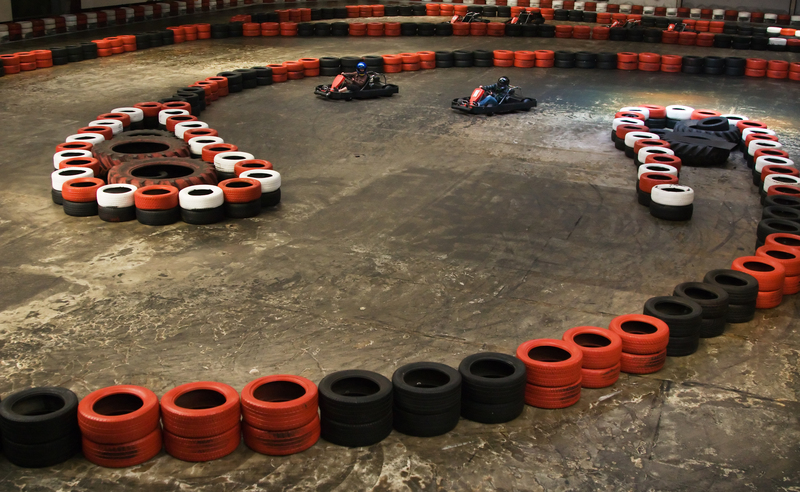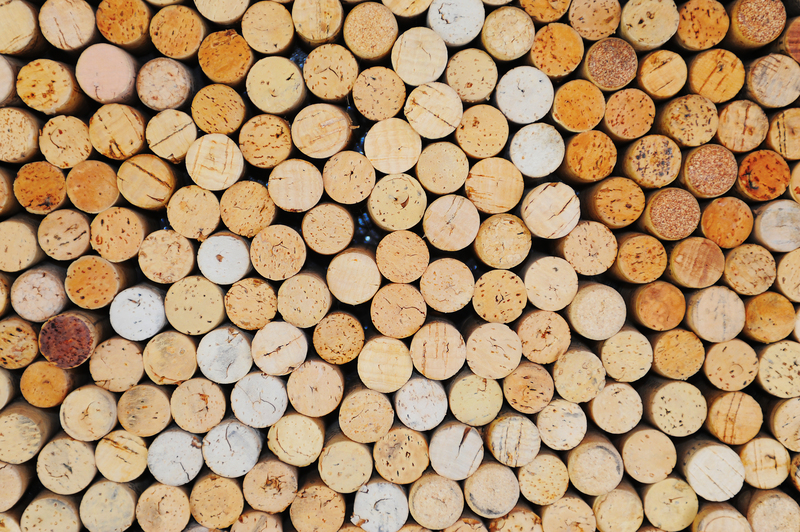Giving New Life to Pots and Pans Through Recycling
Have you ever wondered what to do with those old pots and pans accumulating in your kitchen? Rather than sending them off to a landfill, where they can take centuries to break down, there's a far better solution: recycling cookware. Repurposing and recycling pots and pans not only helps the environment, but it also opens the door to a world of creativity, sustainability, and community impact.

Why Recycle Old Pots and Pans?
Old or unwanted cookware is made out of valuable materials--usually metals like aluminum, cast iron, copper, and stainless steel. Throwing these items away wastes resources that could be reprocessed into new products. Here are a few reasons why recycling pots and pans is a wise choice:
- Reduces landfill waste: Metal cookware doesn't decompose and can clog landfills for decades.
- Conserves natural resources: Recycling saves the raw materials and energy required to mine new metals.
- Lowers greenhouse gas emissions: Less mining and manufacturing lead to fewer emissions.
- Supports the circular economy: Keeps valuable materials in use longer, reducing the need for single-use products.
- Sparks creativity and community projects: Upcycled pots and pans can be transformed into art, planters, or charity donations.
The Environmental Impact of Throwing Away Cookware
Every year, millions of tons of discarded cookware end up in landfills. When old pots and pans are thrown away, the non-renewable resources they're made from--including iron, aluminum, copper, and non-biodegradable coatings--are lost. Worse, some pans, such as older nonstick varieties, may contain chemicals that can leach into soil and groundwater. Recycling pots and pans is a direct way to minimize these negative environmental effects.
Types of Pots and Pans Suitable for Recycling
Most conventional cookware can be recycled, but some are more suitable than others. Knowing the materials in your old pots and pans helps you determine the best recycling method.
- Aluminum cookware: Lightweight and heat-conductive, most aluminum pots and pans can be recycled, especially uncoated varieties.
- Stainless steel cookware: Rust-resistant and commonly used, stainless steel is 100% recyclable.
- Cast iron: Hefty and timeless, cast iron pans can be melted down for reuse.
- Copper cookware: Copper is highly valuable for recycling due to its demand in electronics and construction.
- Enamel-coated and nonstick cookware: If the pan is heavily chipped or damaged, scrap metal recyclers may still accept it, but coatings should be disclosed.
Pro Tip: Check for handles, silicone grips, or plastic parts. Remove them if possible, since some facilities only accept pure metals.
How to Recycle Pots and Pans Responsibly
Recycling old pots and pans isn't just a matter of tossing them into your blue bin. Here's a step-by-step guide to making sure your used cookware gets a second life the right way:
Step 1: Assess the Condition
If your pans are still usable, consider donating them first. Many shelters, soup kitchens, or community organizations accept gently used pots and pans.
Step 2: Remove Non-Metal Components
Take off any plastic handles, knobs, or rubber grips that can't be recycled with metal. If the pan has a glass lid, recycle it separately according to local guidelines.
Step 3: Contact Your Local Recycling Center
Rules for recycling cookware vary by location. Call your municipal recycling program or search online for scrap metal facilities accepting household items. Some centers require items to be sorted by metal type.
Step 4: Use a Scrap Yard or Metal Recycler
Most scrap metal yards accept old pots and pans--even those with some wear and tear. They process mixed metals, making this a convenient option.
Step 5: Utilize Producer or Retailer Take-Back Programs
Some cookware manufacturers and retailers offer return or exchange schemes for used cookware. Brands like Calphalon, Le Creuset, and certain big-box stores encourage responsible disposal by accepting old pans when you purchase new ones.
Creative Ways to Upcycle Old Pots and Pans
If recycling isn't readily available in your community, upcycling offers another eco-friendly alternative. Give old cookware a new life with these clever ideas:
- Planters: Line with coconut coir or landscape fabric and turn saucepans into unique indoor or outdoor planters.
- Garden Art: Rusted or colorful pans make interesting garden sculptures, bird feeders, or fairy garden accessories.
- Wall Decor: Hang an assortment of vintage pans on your kitchen or patio wall for a rustic vibe.
- Clocks and Chalkboards: Convert old pans into creative kitchen clocks or chalkboard surfaces for notes and lists.
- Candle Holders: A cast iron skillet or muffin tin can make a dramatic and sturdy candle base.
Upcycling is a fun way to involve friends and family in sustainability while adding character to your home or garden!
Where to Recycle Pots and Pans Near You
Not sure where to recycle your old cookware? Here are some options to explore:
- Scrap Metal Recyclers: Search online for 'scrap metal recycling near me' or visit platforms like Earth911 or Recycling Locator.
- Local Municipal Recycling: Many cities accept cookware as part of bulk or metal recycling pickups. Check local government websites for details.
- Charity Shops and Nonprofits: Donate usable items to organizations like Goodwill, Salvation Army, or local shelters.
- Retailer Collection: Inquire in-store or online about cookware take-back schemes when buying new pots or pans.
- Community Events: Some towns offer seasonal 'clean-out' days where a variety of materials, including scrap metal, are collected.
What About Nonstick and Coated Pans?
Nonstick pans can be tricky due to their coatings, which may not be recyclable through regular channels. However, many scrap metal facilities will accept them if the pan is mostly metal and contaminant-free. Dispose of heavily damaged or Teflon-coated pans responsibly and never place them in curbside bins unless specifically allowed.
The Benefits of Recycling and Upcycling Cookware
- Protects the environment: Prevents landfill buildup and reduces mining for new metals.
- Saves energy: Recycling metals uses less energy than extracting raw materials.
- Benefits communities: Donating usable cookware helps families and nonprofits in need.
- Makes a creative impact: Upcycling gives cookware a new purpose, reducing demand for new decorative or functional items.
- Builds awareness: Your efforts can inspire others to rethink waste and embrace sustainable choices.
Choosing to recycle or upcycle your pots and pans is a small act that creates lasting change. Each step you take contributes to a cleaner, healthier planet and encourages a culture of mindful consumption.
Tips for Prolonging the Life of Your Cookware
To reduce waste and keep pots and pans out of the waste stream, consider these care strategies:
- Follow manufacturer's cleaning instructions: Use gentle sponges and avoid harsh chemicals that wear down coatings or metals.
- Season cast iron: Regularly seasoning will keep it nonstick and rust-free.
- Store properly: Avoid stacked storage to prevent scratches, and hang pans when possible.
- Avoid drastic temperature changes: Sudden shifts from hot to cold can warp metal cookware.
- Replace only when necessary: Buy quality pieces designed for longevity, reducing the frequency of replacements.
Eco-Friendly Cookware: What to Look For
For your next cookware purchase, think about recyclability and sustainability:
- Choose all-metal cookware: These are easier to recycle at end-of-life.
- Look for recycled-content products: Some brands use recycled aluminum or steel in manufacturing.
- Avoid Teflon or PFAS coatings: Opt for ceramic, cast iron, or stainless steel instead.
- Purchase from eco-conscious brands: Investigate companies that offer take-back or recycling programs for their products.
By purchasing responsibly and caring for your cookware, you can reduce waste and support the future of sustainable kitchens.
Frequently Asked Questions About Recycling Pots and Pans
Can I put pots and pans in my curbside recycling bin?
Generally, the answer is no. Most municipal programs do not accept cookware in curbside bins due to their size and material composition. Always check local guidelines--some offer special bulky item collections or drop-off days.
Are nonstick pans recyclable?
Some scrap metal processors accept nonstick pans, especially if you remove aluminum or steel from coated surfaces. Check with the facility before bringing them in. Very damaged nonstick pans should be discarded carefully to avoid releasing toxic chemicals.
Should I donate or recycle my old cookware?
If your pots and pans are in good shape, donation is a great way to extend their life and help those in need. Recycling is best for items that are warped, damaged, or have lost their nonstick effectiveness.
Can cookware lids be recycled?
Metal lids can usually be recycled with scrap metal. Glass lids may be accepted in glass recycling, but check with your local guidelines, as tempered glass isn't always permitted.
Are ceramic or glass cookware recyclable?
Ceramic and glass bakeware are not usually accepted in curbside recycling due to their high firing temperatures and mixed materials. Consider donating or creatively upcycling them instead.

Conclusion: Turning Old Cookware Into New Opportunities
Giving new life to pots and pans through recycling is more than just an environmental option--it's a chance to foster creativity, community, and more sustainable habits. Whether you're recycling, donating, or transforming your cookware into beautiful planters and art, every effort makes a difference. Don't let your old pots and pans go to waste--give them a second chance to shine!
Ready to Recycle Your Old Pots and Pans?
Start today by sorting through your kitchen cabinets. Contact local recyclers, check for donation centers, or try your hand at upcycling. By choosing to recycle, you contribute to a greener future and inspire those around you. Let every pot and pan tell a new story--one of sustainability and positive change.
For more tips on kitchen sustainability, recycling, and creative upcycling, follow our blog and join the movement towards waste-free living.
